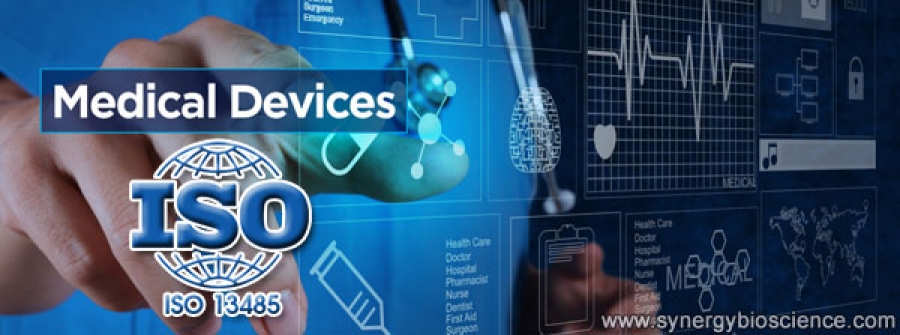Is your risk management process ready for ISO 13485? Last year, the International Organization for Standardization (ISO) dramatically revamped its ISO 13485 standard, which sets rules for medical device makers to demonstrate quality control processes and make sure that devices sold to customers are safe and reliable. Certification ensures the ability to sell internationally; losing this certification can sink many businesses. Like most changes in ISO standards, device manufacturers have three years to get certified by the registration agencies. But the new
The arrival of FDA inspectors to evaluate your clinical trial program (or your CRO’s program) doesn’t have to be a jarring experience. But too often, it is. FDA clinical investigators most often find discrepancies such as: • Not following the investigational plan. • Deviating from the established and approved protocol. • Inadequate record keeping. • Poor accountability of the product (drug or device) under evaluation. • Inadequate participant/subject protection, including no informed consent on file. These problems are all preventable. They can be avoided by diligently
In the 1980s, British health and agricultural officials started receiving reports of cows with symptoms of neurological disease. This disease erupted into an epidemic (in Britain) of bovine spongiform encephalitis (BSE), and the scourge of “Mad Cow Disease” was born. The disease, caused by a prion, crossed over to humans to become new variant Creutzfeld Jacob Disease. The diseases, which were often fatal to cows and rarely fatal to humans, were caused by a mis-folded prion protein fragment, and spread
Reporting changes in your manufacturing process to the FDA can be jarring, and sometimes disastrous. Having to do these reports is something best avoided. But I’m not suggesting anything illegal. Instead, I’ll present the (probably) ancient English phrase, “A stitch in time saves nine.” In other words, taking steps to make your pharmaceutical manufacturing process as hassel-free and controllable as possible prevents you from having to report changes once your product is in the marketplace. I’ve watched the staff of regulatory affairs
The article in the Dallas Morning News was something no pharmaceutical manufacturer wants to see. The headline, “Farmers Branch pharmacies highlight lack of government oversight of custom-made drugs,” may at first appear to attack government regulations, but the article instead claimed that the managers of what is now Downing Labs refused to allow FDA inspectors into its facility, and quoted a consumer activist who said the entire plant should be shut down. While the refusals were committed by
Right now, the process of biologics development and manufacturing is an ever-evolving area. Many new products, largely produced by recombinant DNA, are introducing new treatments for previously untreated diseases, or more targeted, effective treatments for today’s health challenges. On the surface, these products seem wildly diverse: monoclonal antibodies, vaccines, hormones, interferons, interleukins, thrombolytic factors. But they have one thing in common—they are all complex protein molecules that need many more development and manufacturing effort than the conventional chemical-based molecules. Because of
Recently, the US Food and Drug Administration (FDA) cited a pharmaceutical manufacturer for not validating an analytical method. The drug maker’s answer was that the sample matrix was too complex for the method to be fully validated. As you would guess, this answer did not amuse the agency. As we all know, analytical methods play a vital role in supporting all aspects of drug development and approval. Analytical method development and validation documentation is a key component in building the chemistry,
A long-time client of ours called us recently, asking for help. The client found itself under a consent decree by the FDA. It turned out that the decree was issued mainly because of repetitive problems with their CAPA investigations. When we visited the client, we ended up rewriting their CAPA process. However, implementing the new process resulted in resistance. The client’s training department believed all that was needed is to put SOPs online and have employees sign off that they had
Recently, Claris Lifescience Ltd., a maker of injectable pharmaceuticals in India, received a warning letter from the FDA that no firm wants to see: “…Your firm received a complaint from a U.S. distributor (Sagent Pharmaceuticals) informing you that Metronidazole Injection USP IV bags (lot A090744) were contaminated with a swirling mass, which the complainant identified as the fungus Cladosporium species.” The FDA then informed Claris that it had not adequately investigated the root cause of the contamination, nor had it thoroughly
Generic drugs have saved billions of dollars for health care consumers, providers and payers. And the market shows no signs of slowing down. According to the US Food and Drug Administration (FDA), nearly 8 in 10 prescriptions filled in the United States are for generic drugs, totaling more than $70 billion in 2014.This demand has been intensified by the Affordable Care Act and other initiatives aimed at lowering national healthcare costs by compelling a move toward less expensive generics and









